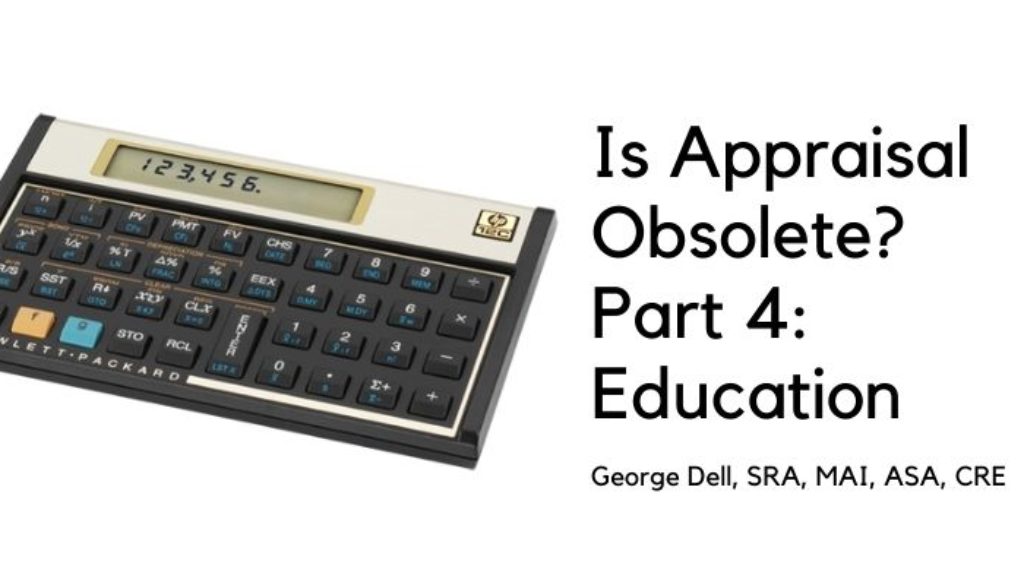If education regurgitates only prior ‘established, time-tested’ methods, nothing happens.
This is the fourth in our series on how progress in appraisal is stymied by the five frictions: process, standards, education, client expectation, and regulation. We will end this series after the new year with a simple, yet comprehensive, mystery solution.
Stale education perpetuates appraisal obsolescence and, in turn, is constrained by the other ‘frictions.’
Education staleness spins on two axles. The first is the regurgitated belief that ‘hand-picked comps’ are superior to analytical methods. The second is the pointless teaching of random-sample inferential-statistics in the guise of “advanced quantitative” methods.*
Complete data sets are now commonly available in seconds. So, there is no reason to discard perfectly good information — which can be used to improve trueness and sureness of results.
When you have all the ‘information necessary,’ there is no need to take a sample of any kind: Not random, and certainly not subjective, bias-prone judgment/convenience data selection. You just use the relevant data. This is the essence of the data science spirit.
Continuing education tends to be repetitive, rote, and ‘hours-based’ rather than effectiveness-based. Appraisal quality continues to decline.
However, progressive appraiser training and education is stymied in each dimension:
- Financial penalty retards spread of modern methods. First, we have impediments to development and marketing. It is much cheaper to rehash old ‘acceptable’ methods. New material must be ‘qualified’ by employees who are unqualified in the new material. Second, there is a prohibitive need for ‘approval’ from 54 states and territories. “Approval” of one 7‑hour course incurs some $7,000 in fees and the administrative burden of some 130 separate, different ‘forms.’ While some states are easy, others take months (including many unreturned calls and emails). Renewal costs and multiple differing certification and reporting requirements are a bureaucratic overhead nightmare.
- Standards embed outdated practices. USPAP insists on belief-based credibility – rather than measurable reliability. The ‘worthy of belief’ requirement also precludes integration of risk/reliability information into client collateral, investment, or equity enforcement action.
- Aging of the profession retards progress. Most personal decisions reflect personal motivations (whether conscious or unconscious). Someone in their 60’s, planning for retirement, seldom will put new education, new methods, and new excitement to the task. There is simply little ‘human capital’ return. In addition, people in positions of organizational influence tend not to think like younger appraisers. It is generally the oldest participants who are in positions of power and respect. They are steeped in the “time-tested” body of knowledge. They are the least inclined to explore and apply newer data science approaches.
- Regulations in the 54 jurisdictions, and its teaching by appraisal organizations, mimic Appraisal Foundation curriculum. Education for new qualifying appraiser licensing follows traditional edicts for belief-based, judgment-oriented, qualitative-experience assumptions.
- Clients’ expectations align with the same old education their reviewers got. Their checklist compliance systems are also set up to comply with traditional, judgment-based methods. This is exacerbated as AMCs (Appraisal Management Companies) mechanize methods.
Education follows the traditional “three approaches” models. Compliance is taught, regulated, reviewed, check-listed, and habitual. And all this — assisted by mutually-agreed groupthink.
